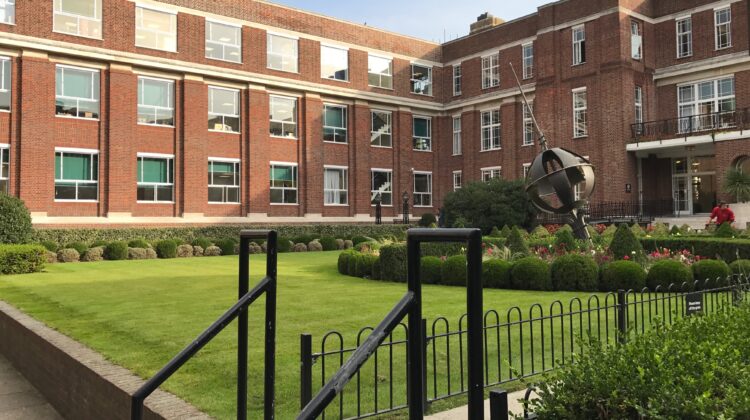
Going beyond the traditional borders, be it education and pedagogy, architecture or geographical borders was the red thread of the Transitions symposium, the traveling ‘roadshow’ of the ILETC project when it came to London and Regent’s University for the first ever European edition (full program here).
The world we live in is changing rapidly and schools need to adapt in order to better equip their students for a future in which 65% of them will be working in jobs that don’t even exist today. They need another skillset; collaboration ability, ingenuity and creativity, problem-solving, deep understanding to mention some.
The work continues with @stephenheppell at #Transitions17 @projectILETC pic.twitter.com/AEC1CUYJSM
— Katrina Axford (@kataxe01) September 7, 2017
Innovative learning environments aim to bring this type of education and learning but they’re not as straightforward as you may think. Studies conducted by Mie Guldbaek Broens (interview with Mie here) indicate that even schools with beautiful, activity-based spaces often end up placing the furniture and equipment in a way that resembles traditional classrooms, unknowingly. Or maybe worse, don’t use these spaces at all and instead cram everyone into the (too few) cellular classrooms.
The design on its own won’t create change
Why is that?
Is there something wrong with the design? The acoustics? The curriculum?
Maybe. But research has shown, much like offices that implement activity-based working (ABW), that you need to pay close attention to training the users of the space, maybe set up a shared policy or guidelines in terms of what’s expected, working with the behaviour, and in the long-term, culture of the organisation. As they say, culture eats strategy, or in this case maybe activity-based design, for breakfast.
As they say, culture eats strategy, or in this case maybe activity-based design, for breakfast.
Teachers literally didn’t have the keys
The teachers must be considered important culture bearers and the Transitions seminar in London presented some research that points out a couple of the challenges (that can be turned into opportunities!) that many projects and schools meet.
A Norwegian PhD study by Siv Marit Stavem showed that teachers fear losing control and therefore don’t use breakout spaces.
Bodil Bojer, industrial designer and PhD researcher in Denmark presented her findings and stressed the so-called handover stage. Without which the agile spaces were empty and unused, the teachers didn’t even know where the keys were kept for the purpose-built furniture. In this case, the handover or activation stage included a workshop and presentation but her study also found that the concept of innovative learning environments is something that needs to be considered on an ongoing basis; documenting and sharing best practice at the monthly staff meetings for example.
Don’t forget the handover eith the enduser #Transitions17 @projectILETC pic.twitter.com/XQ1cHbttJH
— Colin Campbell (@EDU_Colin) September 7, 2017
Bodil’s theme throughout her presentation was about building bridges, creating a common language between architects and the users of the spaces and as acousticians, there is much that we can add to this process. Several presentations during Transitions17 mentioned the important role acoustics play in these buildings and this is where we can bring our expertise and improve the chances of success for these schools that are tackling the difficult task of preparing our children for a future that is largely unknown.
How acousticians can help the handover process
- Explain how to get the most out of the acoustic design
- Recommend, or help set up a sound policy
- Provide other tips like how they can work with the interiors and furniture to further improve the acoustics, or lighting to improve focus work
More on ILETC and Transitions17
To find out more about the topics presented and the discussions had, search Twitter for the hashtag #Transitions17 which also gives insight to the US event in Grand Rapids a week after the London seminar. The full proceedings will be published in a book, follow the ILETC project on Twitter for updates
Follow @projectILETC.
More information on the project and a wealth of related resources on the ILETC website.

